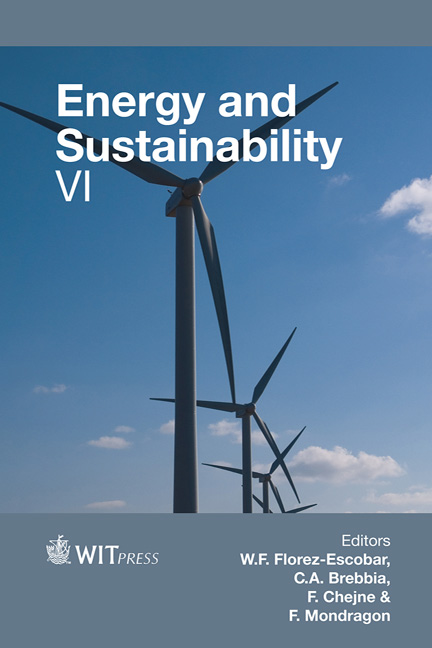Assessment Of Solar Reflectance Of Roofing Assemblies Of Dwellings In Guayaquil, Ecuador
Price
Free (open access)
Transaction
Volume
195
Pages
9
Page Range
307 - 315
Published
2015
Size
608 kb
Paper DOI
10.2495/ESUS150261
Copyright
WIT Press
Author(s)
J. Macias, G. Soriano, H. Sanchez, Y. Canchingre
Abstract
A study of the impact of solar reflectance of roofing assemblies on energy behaviour of social interest dwellings located in Guayaquil, Ecuador is presented. Values of solar reflectivity were obtained for a typical sample of local roofing materials using the procedure for measuring the solar reflectance of flat or curved roofing assemblies developed by Akabari, which is suitable for assemblies and surface materials with surface irregularities and non-homogeneous colour. This methodology when compared with the standard methodology ASTM E1918 “Standard Test Method for Measuring Solar Reflectance of Horizontal and Low- Sloped Surfaces in the Field” produces differences of ±0.02 units of reflectance for sample assemblies of homogenous colour and ±0.03 units in sample assemblies of heterogeneous colour. Values in the range of 0.29 to 0.51 were measured from the sample of local materials. The social interest dwelling model follows the guidelines of the Ecuadorian Secretary of Housing. The energy behaviour of the dwelling was modelled using a simulation software compliant with ANSI/ASHRAE 140. Differences of the annual energy consumption in KW-h of the dwelling when using a standard window air conditioning unit are analysed for the range of measured and ideal solar reflectance values. Thermal comfort is studied by a floating simulation to obtain the effect of solar reflectance on maximum interior temperature and relative humidity.
Keywords
solar reflectance, roofing assembly, energy consumption, thermal comfort





